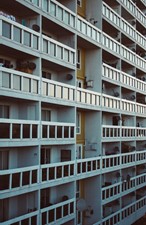
Photo by Edward Howell on Unsplash
Under section 11 of the Landlord and Tenant Act (1985), the landlord is obliged to keep in good repair and working order:
- the structure and exterior of the dwelling-house
- the installations in the dwelling-house for the supply of water, gas, electricity, and sanitation
- any installations in the dwelling-house for space heating and heating water
In the above, the term dwelling-house should be understood to mean the building or part of a building that is let to a tenant as their only or primary place of residence , and so in the original 1985 Act this is what the obligation applied to.
Where the demised premises form only a part of a building, the tenant’s quiet enjoyment of it will not only be affected by that which lies within the confines of the dwelling-house but also by the building at large. For this reason, an amendment to section 11 – subsection 11(A) - came into force in January 1989 meaning that, for tenancies that began on or after this date, ‘the covenant extends to other parts of the building in which the dwelling-house is situated, provided that the building is also owned by the landlord.’ This means that the repairing obligation will also extend to common areas of a building, such as an entrance hall or stairwell.
It is important to note here that common parts that are not part of, or attached to, the building, are not covered by section 11 as was ruled by the Supreme Court in Edwards v Kumarasamy . They may, however, be covered by section 4 of the Defective Premises Act, or alternatively it is possible these would be covered by the terms set out in the tenancy agreement.
If the landlord does not have ‘an estate or interest’ in these communal parts – for example, if they fall outside of the leasehold – then the liability will not be with the landlord but, for example, the freeholder of the building overall or the third-party leaseholder responsible for the defective parts.
Whilst it is not always possible to have access to the tenancy agreement ahead of an inspection, where disrepair is identified in the common areas that has affected the tenant, and where it is reasonable to state an assumption in the Scott Schedule that the tenancy agreement was entered into after January 1989, then the Surveyor will schedule the associated disrepair.
[1] Jan Luba, Housing Conditions tenants’ Rights sixth edition (2019), 2.76, p97.
[1] Diane Astin, Housing Law Handbook Fourth Edition (2018), p627.
[1] Edwards v Kumarasamy [2016] UKSC 40.